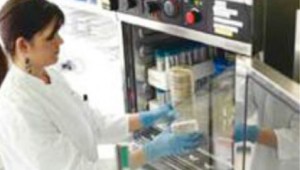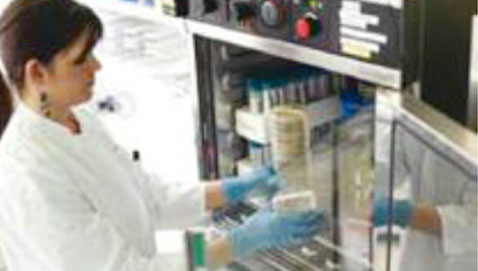 The increasing use of sustainable materials in cars creates new challenges for automotive manufactures.
The increasing use of sustainable materials in cars creates new challenges for automotive manufactures.
Sustainability is a global megatrend which has also taken hold in the automotive industry. Vehicle manufacturers are increasingly using a mixture of man-made and natural fibres in cars. In addition to the aspect of sustainability and the associated use of renewable resources, the manufacturers are primarily looking to reduce the vehicle weight by using alternative materials and material combinations. But natural fibres such as sisal, coconut or hemp are not just used in non-visible functional components any longer. They are also found in visible areas, e.g. in the vehicle interior, to make sustainability a direct sensory experience for the driver. The requirements for the materials are extremely high. Microorganisms cannot be allowed to settle despite constantly changing temperature and humidity conditions. This could lead to unsightly effects such as spots of mildew as well as unpleasant odours in the vehicle interior. While this resistance has to be guaranteed for the lifetime of the vehicle, after decommissioning the focus shifts to rapid degradation – without residue if possible – of the interior fittings and attached parts to satisfy environmental protection aspects. To manage this balancing act (protecting the material, avoiding odours and ensuring biodegradability), the material properties have to be analysed in detail and optimised. The growing number of allergy sufferers is another challenge for car manufacturers and their suppliers. Several automotive manufacturers are striving to create an “allergy-free interior” where natural materials as well as plastics, paints and varnishes pose no health risks. The scientists use realistic models for simulations such as the test sample being infested by aggressive mould. The material is then analysed for fibre damage. To accommodate the global setup of the automotive industry, the experts use not only microorganisms commonly found in Central Europe but also a portfolio of various moulds occurring all over the world. A soil burial test is used to determine how well a material will rot away at the end of its lifetime. This test requires a material sample to be buried in biologically active soil under standardised conditions. The soil provides an ideal environment for bacteria and fungi. The material is analysed at defined time intervals and compared with its new condition. This provides information about the degradation process. The sensory lab also allows a reproducible quantification of odour formation and answers a range of questions: Does the material have an inherent odour? Are bad odours the result of microorganisms settling on the textile? Specially trained test subjects – so-called panellists – detect very fine odour differences on a special test device (olfactometer). These are then evaluated with the help of a dedicated software. And what about the “allergy-free interior”? The scientists answer the question about the allergenic potential of interior materials by using a cost-efficient cell culture test for which they use the body’s own immune cells. If a sample has allergenic potential, the reaction of these guard cells works like an alarm during the tests in the lab.










